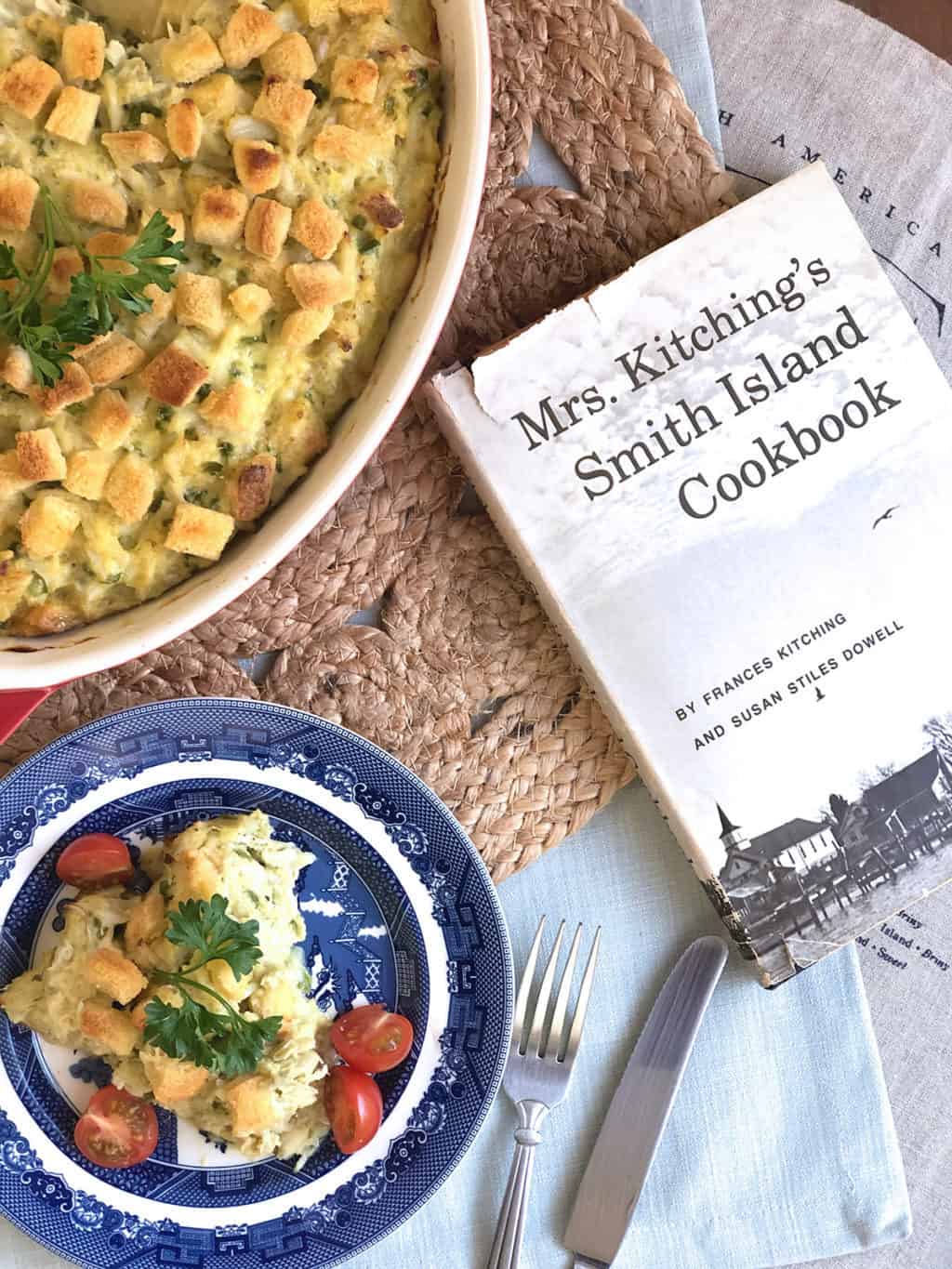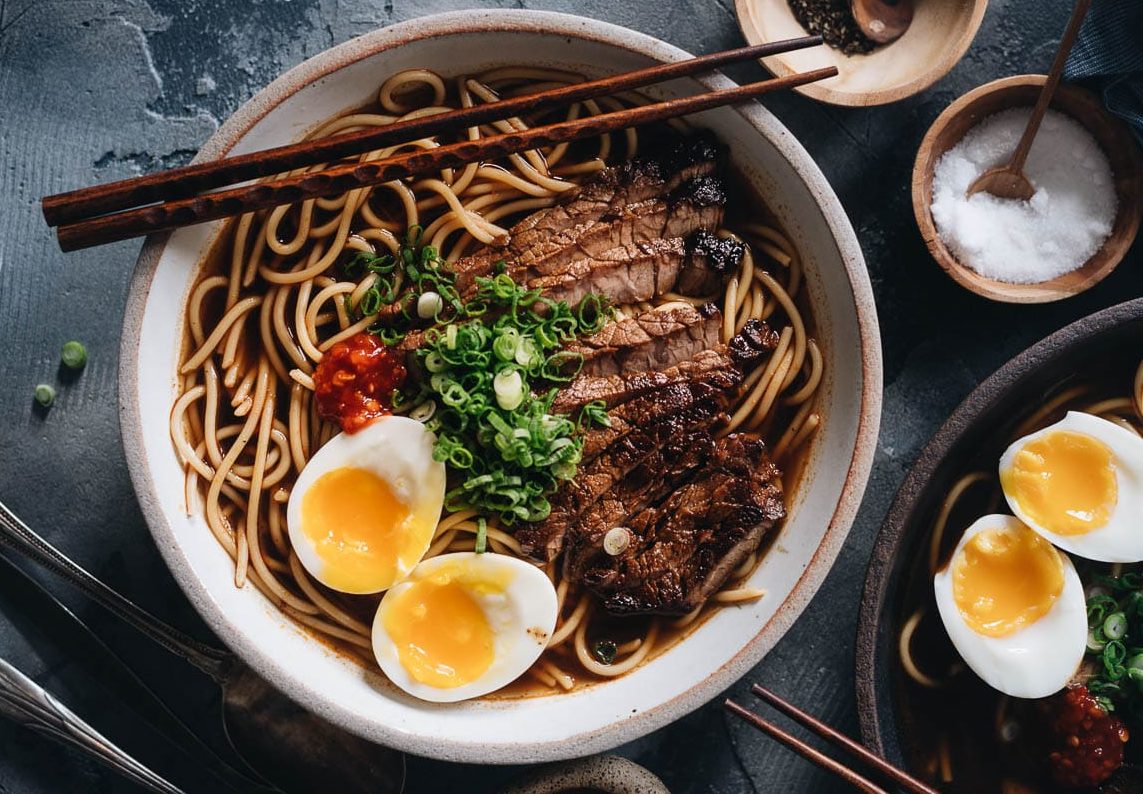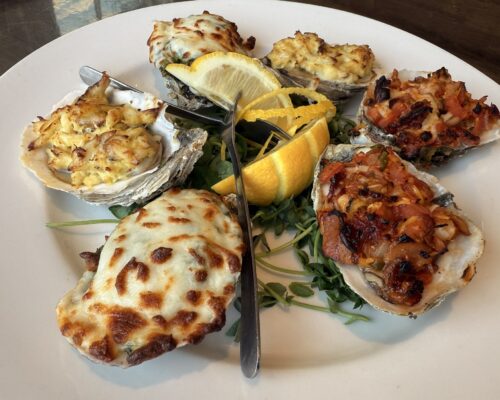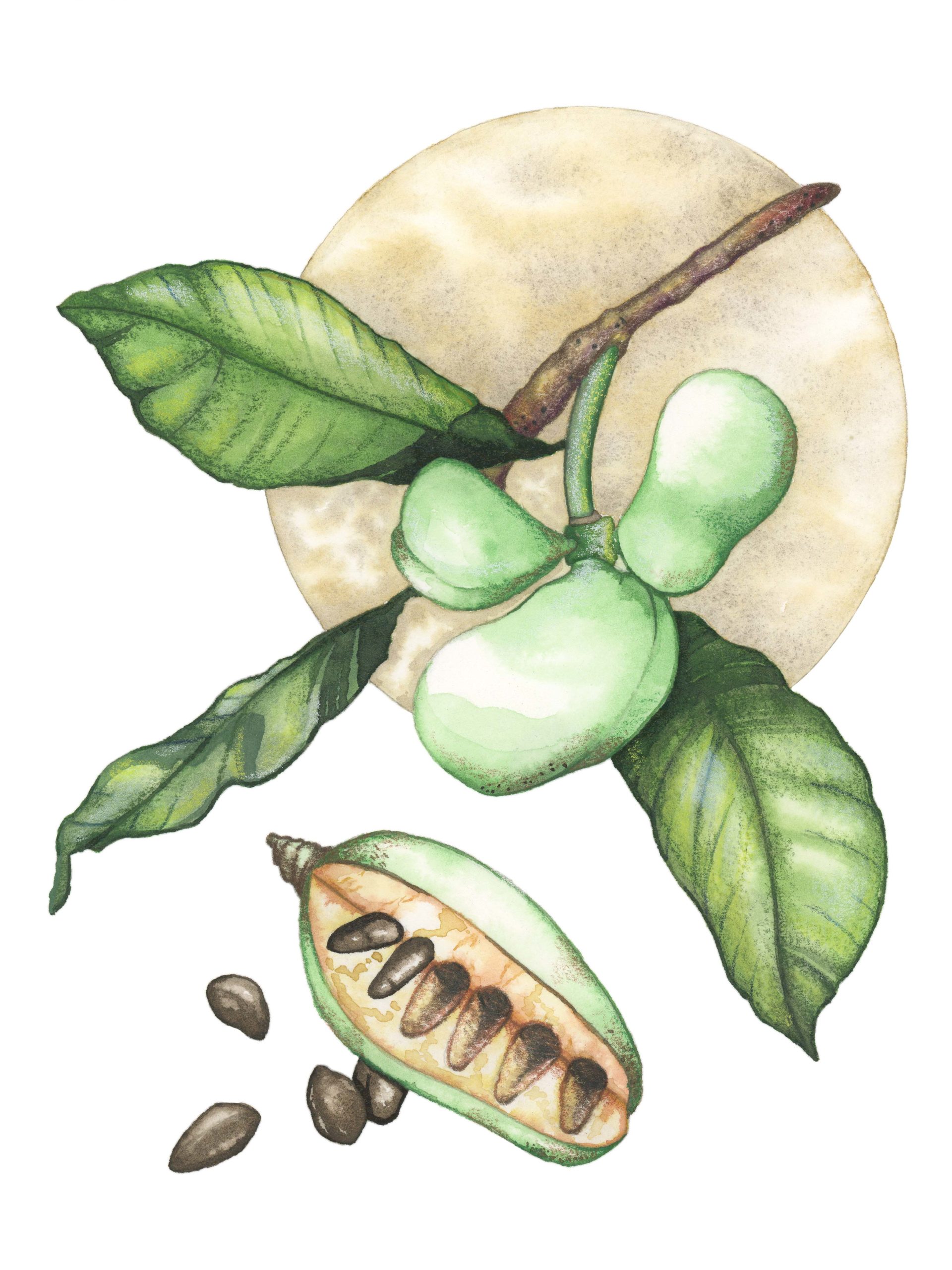In honor of its 40th anniversary, we discover the back story behind a Chesapeake cookery classic.
Frances Kitching will not serve muskrat or diamondback terrapin to guests in her famous Smith Island, Maryland, inn. “I do for others what I do for myself,” she will tell you. “I don’t like muskrat and I don’t want any little turtle fingers floating around in my soup.”
So goes the introduction to one of my favorite books: Mrs. Kitching’s Smith Island Cookbook. I discovered it some years back in a used bookstore on Maryland’s Eastern Shore. I told the bookseller I was looking for something local and unique, and he handed it to me. It was a first edition, published in 1981, with a worn cover and dog-eared pages. I wasn’t looking for a cookbook, but leafing through it, I realized this is no ordinary one. Along with recipes handed down for generations, it’s a book of stories, of the watermen and families who lived and worked on this unique island community in the middle of the Lower Bay.
Frances Kitching learned to cook at the hem of her grandmother’s apron. She started her business in the early 1950s, preparing meals for the linemen who came out from the mainland to install electricity on the island. Soon after, she began opening her home as a seasonal boarding house for tourists, where the overnight stay came with dinner and breakfast. Word spread of her fantastic, down-home meals, served family style in her large dining room. There was no menu; you ate what she was cooking, which depended on what she had on hand and what she felt like doing (or, in the case of muskrats and terrapins, what she didn’t feel like doing).
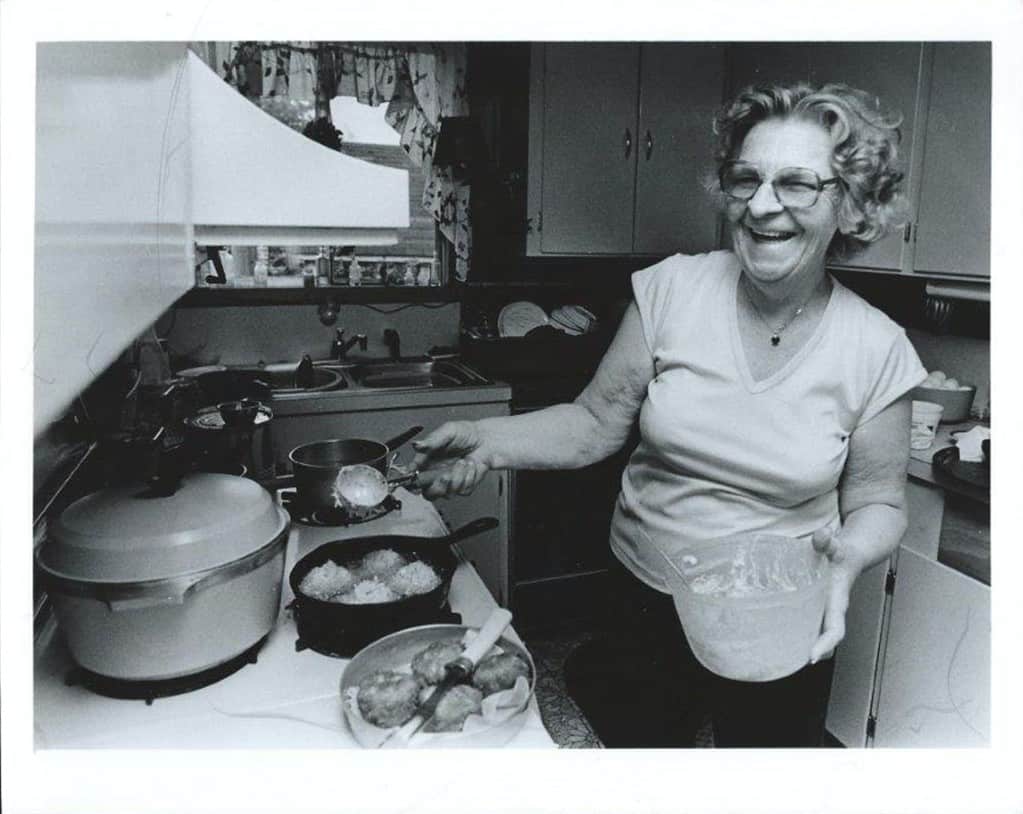
The book’s co-author, Susan Stiles Dowell, first went to Smith Island as a producer for Maryland Center for Public Broadcasting. This was just after the Great Freeze of ’77, when temperatures dropped so low that the Bay froze, cutting off the channel that was (and still is) the residents’ connection to the mainland. The island remained cut off for seven weeks, and provisions were dropped in by helicopter. The story made big news across the region, which led to Dowell’s assignment to do a profile of life there.
The writer stayed with Mrs. Kitching while reporting the story, and through her wanderings around the island met many of the locals via introductions from Frances and her waterman husband, Ernest. Dowell found more stories than she could fit into the assigned piece, but kept her notes, hoping to find a place to use them. “I didn’t really feel like I caught everything about this culture. The warmth of the people, the incredible food…,” she said, when I tracked her down to ask about the book’s origins.
Around this same time, Mrs. Kitching’s cooking was getting buzz beyond the shores of Smith Island, including an invitation to appear at the Smithsonian Folklife Festival and a profile in The New York Times. The latter, which appeared in The Arts section in July 1979, included recipes for corn pudding and clam fritters, but not for her prized pickled carrots. “I might write a cookbook someday,” she told the reporter. Soon after, she reached out to Dowell. “She said, ‘I would like to get my recipes published,’” recalled Dowell. “I told her I’d help.”
Helping meant joining Mrs. Kitching in her kitchen and watching her cook. “She measured with a teacup and a teaspoon,” Dowell said, chuckling at the memory. “She inherited all this stuff…everything was in her head.” Dowell watched, took notes, and then recreated the recipes at her home outside of Baltimore, translating Mrs. Kitching’s years of instinct into clear measurements and directions for mainland cooks.
In addition to the recipes, the book also gave Dowell a chance to share the stories and traditions she’d learned on her multiple trips to the island. “This is a place of storytelling,” she said. “This is a place with 400 years of a society of people who pull together, who help each other. I wanted to [share] what brought these people there, why are they still there, and how they feel about their environment.”
A Feast for All Seasons
Most cookbooks are arranged into courses, but this one is done by season. “It had to start with summer, because that’s the crux of the foodway on this island,” Dowell said. “It’s the crabs; it’s how they catch the crabs and how they do the crabs. It all had to be hand in glove, and the stories had to enhance it.”
Recipes include crab of all kinds: cakes, soup, flash fried, imperial, stewed, steamed, and more. (Dowell’s favorite recipe is from this section, a Mrs. Kitching original called Crab Loaf.) But you also find a wider taste of summertime life, with picnic staples including barbecue chicken, macaroni salad, and yes, pickled carrots, following an evocative introduction to the history and geography of the island. There’s also a short section on clams, hardshell and softshell (or manos), hinting at the long-standing but good-natured rivalry between watermen.
Mano clammers and oystermen by law must keep their distance. Faint snickers from the oystering contingent, however, may still accompany the sight of a mano boat broiling up the foam in its lurching reach to starboard.
Fall moves into the pursuits of oystering, fishing, and hunting, and observations include the local take on hunting restrictions:
According to [longtime islander and hunter] Paul Marshall, there are not enough people on Smith Island to disturb the environment. “People here are more in danger of going extinct than the animals.”
Recipes including baked rockfish with potatoes, fried duck, and white squash pudding, paired with recollections of waterfowl hunters collecting arrowheads while waiting for ducks, and oystermen bringing up fossils as they tonged for bivalves along the ancient Susquehanna riverbed. One elementary-school science class gathered some of their fathers’ finds; it ended up taking them to the Smithsonian Institution, where they learned that their casual school project was in fact the remnants of a 12-million-year-old whale.
Winter is when watermen get the chance to sit around the general store and spin tall tales.
Former Tangier Sound Watermen’s Associate President, Jennings Evans, explains…“Some of them are true. The majority got a little truth to ‘em. Some have been polished up to make the laugh even better.”
The recipes in this section are heavy on winter’s biggest crop: oyster stew, oyster puffs, scalloped oysters, and more. But others shed light on what you do when grocery runs to the mainland are disrupted due to unpredictable weather; you make do with what you have, turning saltines into Cracker Pudding and canned fruit into Pineapple Sauce Casserole. These recipes could be 40 years old, or they could be 140 years old, reflecting the timelessness of life here.
Spring brings warmer weather, and a return to the long hours it takes to survive and thrive on Smith Island. Men are busy with boat and equipment repairs, while women are hard at work prepping their gardens.
The whole world around Smith Island goes on vacation at once. The sky, wind, and the marsh scintillate in the warming sunlight. Wildlife is more visible and more beautiful as its numbers primp for the mating season. Flocks of cranes, egrets, herons, and ibises replace departing ducks and geese. North of Ewell, the rookeries fill entire islands….Although every islander owns the means to take you to these isolated spots, few will oblige. “Too much to do to go gallivantin’…”
The recipes are a compendium of everything that didn’t fit in the other seasons, from homemade scrapple and “Gringo cabbage” to cookies, cakes, and pies fit for a Sunday social, reflecting how central church is to the island life and connection.
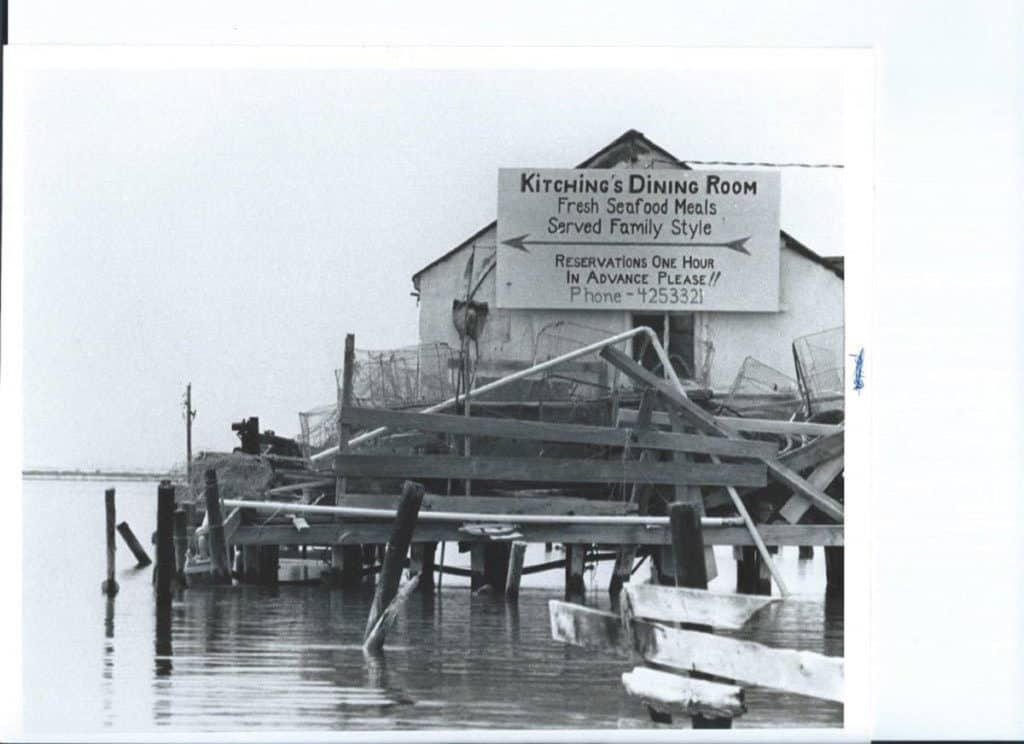
Late-Edition Addition
Surprisingly enough, the original cookbook did not contain a recipe for the island’s most well-known delicacy, Smith Island cake. That was added more than 10 years later, in the 1994 edition.
“One day she called me and said, ‘I have something that needs to be here,’” Dowell said. The cake had been an island tradition for generations, but the recipe had yet to appear in any kind of cookbook.
“She had me come out and I sat there and took notes while she did it,” said Dowell. “She would take innumerable cake pans and spread the batter very thin, like a pancake. She’d put in a couple at a time, take out the ones that were in there, put more in, take those out, put more in, until she finally had the number of layers and maybe a few extra. She let them cool off, and then she would slowly build the cake.”
Mrs. Kitching’s recipe calls for 10 tiers and is tucked without fanfare in a section called Sundry Kitchen Favorites. Little did she know the impact that the sharing of this cake recipe would have, on her island and on her home state. It’s now Maryland’s official dessert.
A Lasting Testament
Mrs. Kitching’s cookbook, dedicated to her grandmother, brought new attention to remote Smith Island. “She was so proud of the book,” said her daughter, Pam Tyler, who worked alongside Mrs. Kitching, helping with cooking and serving. The book drew a slew of curious visitors to the island, looking for an authentic taste of the Eastern Shore. “People would come in on sailboats and come up the house and say, ‘Can we have a meal?’ She would say, ‘Come back at 6 o’ clock and I’ll see what I can do for you.’”
Readers would send her letters and postcards, and she would travel off-island for cooking demonstrations. “She really enjoyed those because she got to talk to her admirers—people who really cared about her cooking and recognized what a unique individual she was, that she represented a very unusual place,” said Dowell. “It was like touching something that not too many people get exposure to.”
“She didn’t speak unless she felt it was really necessary,” Dowell added. “She reminded me of New Englanders that I grew up with; this kind of taciturn, self-sufficient way. Just kind, and careful.”
At this point, Dowell’s voice took on a bit more emotion. “It always amazed me at how she could see things without really saying anything. She was what they call on Smith Island ‘an old head’—she knew things. She just understood and had not just a common touch but a great deal of tenderness and humanity.” On their last in-person meeting, at a cooking demo in Annapolis, she gave Dowell some advice. “She told me basically to pay attention, and to be happy with what I had. That was the underlying message.”
Eventually, health issues took Mrs. Kitching to the mainland, and she passed in 2003 at age 84. But her legacy remains strong. The book has sold thousands of copies, and is still in print, now by Schiffer Publishing. And in 2008, the humble Smith Island cake was named Maryland’s official state dessert.
As for Mrs. Kitching’s home, it was sold and eventually torn down, being deemed past repair. But her legacy, and that of her grandmother and great-grandmothers before that, lives on in her recipes.
Mrs. Kitching’s legacy isn’t only in food. She was a key player in the drive to bring a museum to the island, giving visitors a place to learn about the island’s history, as well as offering practical necessities like public bathrooms, so in-need tourists wouldn’t bother residents by knocking on their front doors and asking to use their toilets (something that apparently happened quite frequently). “It wouldn’t have happened without her,” says the museum’s director Sandie Marine. The Smith Island Cultural Center opened in 1996, and welcomes visitors from May through October. One of its permanent exhibits is a video of Mrs. Kitching in her kitchen, sharing her love of Smith Island food.
MRS. KITCHING’s CRAB LOAF
INGREDIENTS
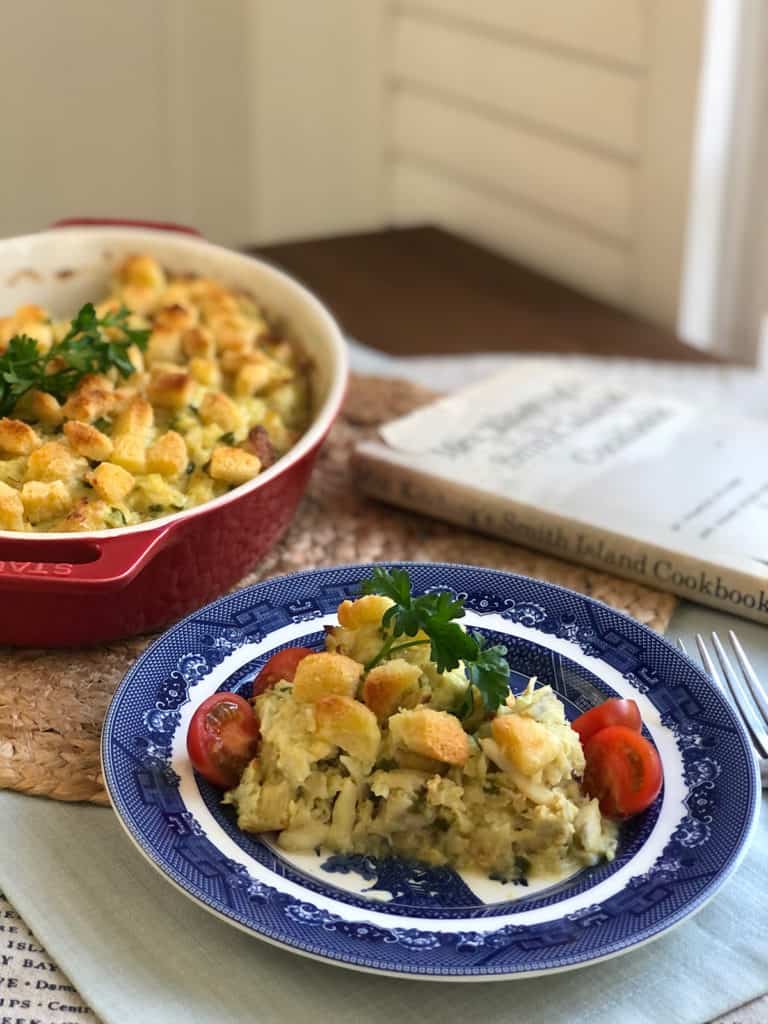
- 2 pounds crabmeat, backfin or special
- 1 small onion, finely diced
- 1/2 medium green pepper, finely diced
- 3 Tbsp butter or margarine
- 1 cup milk
- 3 tsp cornstarch
- 2 eggs
- 3 Tbsp mayonnaise
- 1 Tbsp prepared mustard
- 2 tsp Old Bay Seasoning (use one tsp for less-spicy crabmeat)
- 1/4 cup butter or margarine
- 8 slices of bread without crusts, cubed
Sauté onion and pepper in 3 tablespoons of butter or margarine.
Dissolve cornstarch in one cup of milk and add to sautéed onion and pepper. Stir over low heat until a smooth paste results. Set aside.
Put crabmeat in bowl, and pick through for extraneous shell. Add the eggs, which have been slightly beaten beforehand. Add the mayonnaise, mustard, Old Bay Seasoning, 4 slices of the cubed bread, and the cornstarch mixture to the crabmeat, and stir gently. Spoon the mixture into a 10 x 14-inch baking dish and spread evenly. Do not pack. Place the remaining bread cubes ontop of the crabmeat mixture. Melt 1/4 cup of butter or margarine, and spoon over bread cubes. Bake at 350 degrees for 35 minutes. Cut into 3-inch squares, and serve on a platter garnished with cherry tomatoes.

